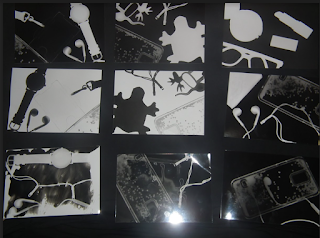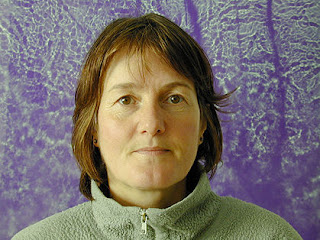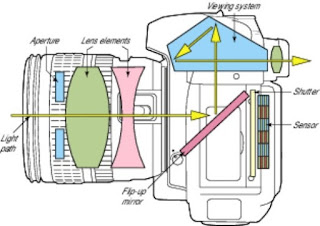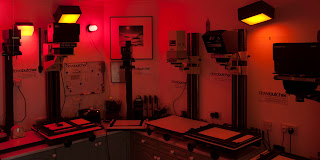Tuesday Lesson 1 Darkroom

Today we went into the darkroom to make photograms and produce pinhole photographs. We started by using photographic paper with everyday objects placed on top. The paper was then place on an enlarger which exposed the paper to light causing the objects on top to imprint as light cannot travel through them, and once developed leaving the different shapes white whilst turning the surroundings black. The pinhole photographs were created by placing photographic paper into a shoe box tightly sealed to prevent any light getting in. The box had a pin sized hole on the lid of the box covered with a removable flap that when opened would expose the paper to light imprinting whatever is surrounding the box at the time. Depending on how long the light is exposed will affect how the picture will come out, if the paper is over exposed the photo will be too dark, however if the picture is under exposed it will develop to faint. Materials - Photographic paper, enlarger, different shaped


